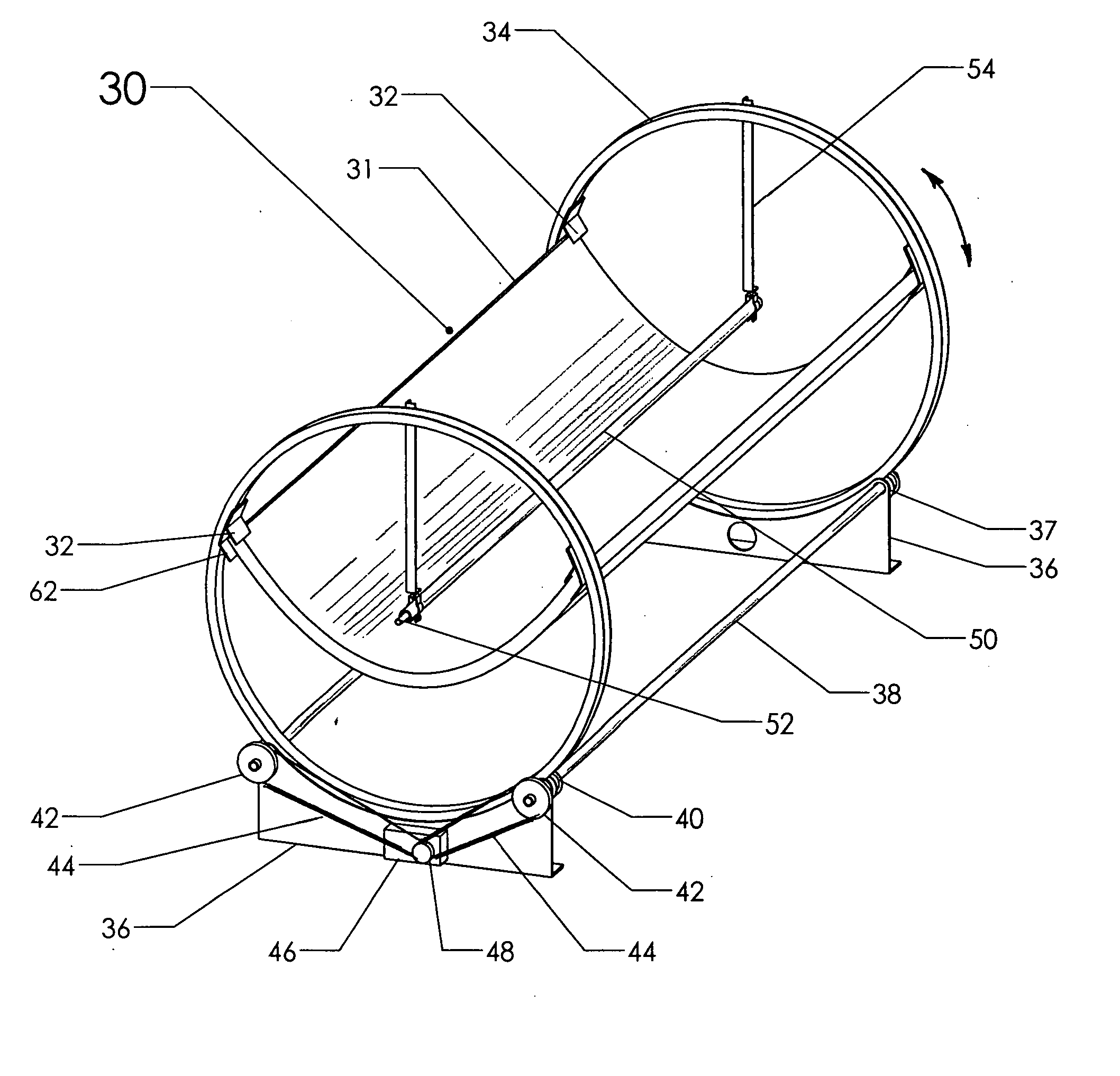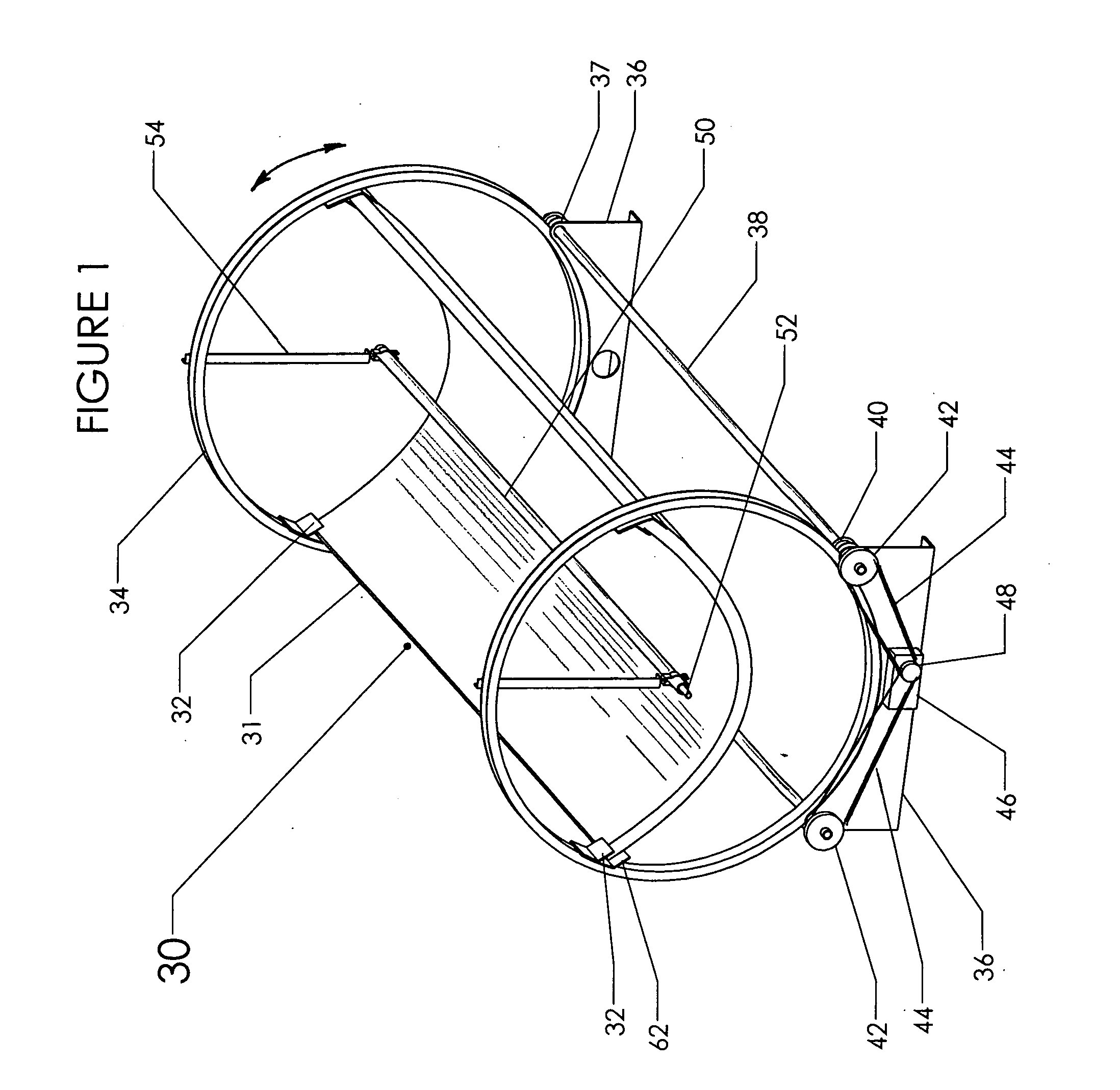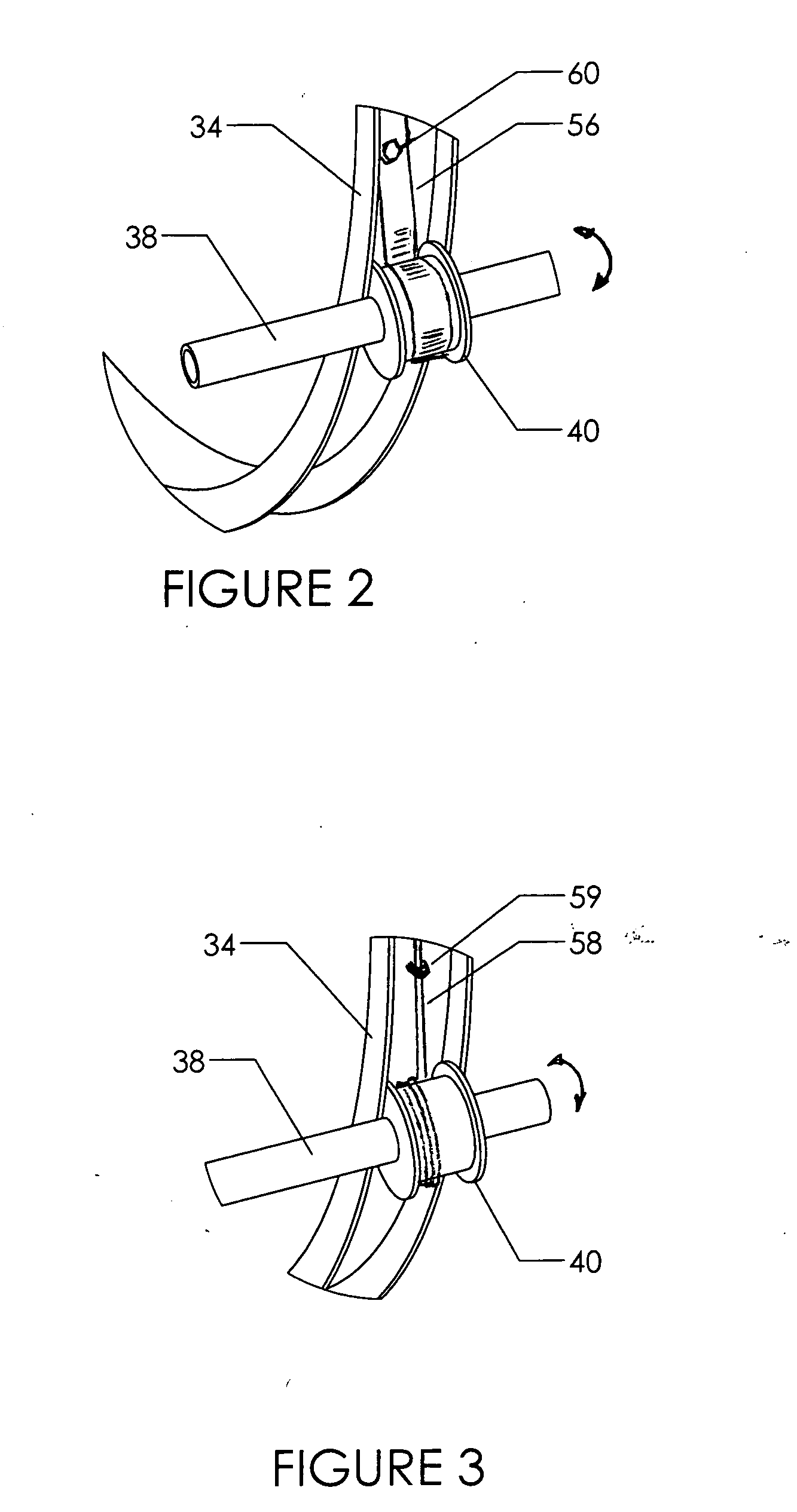Previously parabolic troughs have been limited in
torsion strength and as a result this impacts
initial cost, optical accuracy, and maintenance costs.
Normal wind loads will deform the parabolic shape and affect how light reaches the focal point.
Inefficiencies occur when the light misses the
receiver because of excess deformation.
If one end of the trough twists three degrees, the reflected light at this end will totally miss the
receiver and render the device useless.
The extra material adds cost and limits the size of trough that can be built with this method.
These designs are costly due to the complex weld joints used to join the parabolic ribs to the main
torque tube.
During most of the day, the drive and
brake system must sustain a huge torque load from the weight of the trough being held in one position.
The drive and
brake loads are magnified with the effect of wind and as a result these systems typically employ expensive hydraulic drives to hold and drive trough position.
One approach to help with the offset loading is to use counterweights for balance, but it still does not help with unbalanced wind loads which often exceed the weight of the structure.
Wind loads induce huge reaction loads at these support struts and they require massive concrete anchors to hold the system in position.
The corresponding anchor system is very expensive when supporting these large troughs.
If one drive fails or is not synchronous, it fractures the receiver
pipe and leads to very high maintenance costs.
High cost of receiver breakage was a
weakness discovered in the early SEGGS plants described by Price and Kearney in Parabolic-Trough Technology Roadmap: A Pathway for Sustained Commercial Development and Deployment of Parabolic-Trough Technology.
Since wind loads and gravity apply to the entire trough, there is a twisting moment across the face of each trough that causes optical error particularly at medium wind speeds of 15 to 30
miles per hour.
The most publicized SEGGS trough system in Daggett Calif. experiences high maintenance costs from this type of loading.
The glass reflectors are fragile and fracture when the trough structure is deformed from wind loads.
The
sheet material in the above patents does not clarify detail about how the reflective material is supported and is thus prone to have permanent deformation at high wind loads.
If one trough is misaligned or the
actuator fails, when the other units rotate, the receiver typically fractures and causes
high heat losses and will sometimes start leaking forcing a shut-down of the entire system for repair.
Glass mirrors on troughs are very expensive as they must be formed to very precise parabolic geometry and they are also very fragile.
In this patent, it only operates under a protective structure and this limits its use.
The inflated housing is at risk from 80
mile per hour winds and from
ultraviolet ray damage by the sun.
This error is the combined effect of
tracking error, optical reflective error on the trough, wind deformation error, and the angular zone needed as the trough is stationary and tracking for a
short segment of time.
Hydraulic units are ideal for large systems because they have high power and excellent precision, but they are costly.
Gear motor drives relying on gears or screw drives can be accurate but suffer as they do not have much power.
In that regard, high wind loads put a great deal of stress on
spur gear or screw drive teeth.
Typically, the gear connected to the trough is large for improved accuracy, but being large also makes them very expensive like the ones shown on U.S. Pat. Nos. 257,560 by Ditzler (1882); 4,077,392 by Garner (1978); 4,515,148 by Boy-Marcotte et al.
This makes the teeth prone to high wear and deformation if they are overloaded.
This mandates the use of
stepper or synchronous motors that are again more costly particularly when they must be designed for outdoor conditions.
They are known to have leakage issues and cause high maintenance costs.
Although they will have good rotational control with a large
gear ratio between the drive and driven gears, they have not shown any provision to connect to the receiver.
Since the receiver is not designed to be in the center of rotation, it will rotate and translate and be very difficult to connect to a working plumbing system.
The associated hardware will be specialized, expensive, and difficult to maintain under the extreme operating temperatures and outdoor environmental conditions.
The trough can be rotated in one direction but lacks sufficient detail to describe how the trough is moved back to the original position.
As discussed earlier, the wind loads on a trough are enormous and unless concrete piers are employed, the system can not sustain typical 80
mile per hour winds.
There is concern that as cables stretch over time, some troughs will slip and not track the sun properly.
The spools and cables also restrain the system under high wind loads.
 Login to View More
Login to View More  Login to View More
Login to View More 


